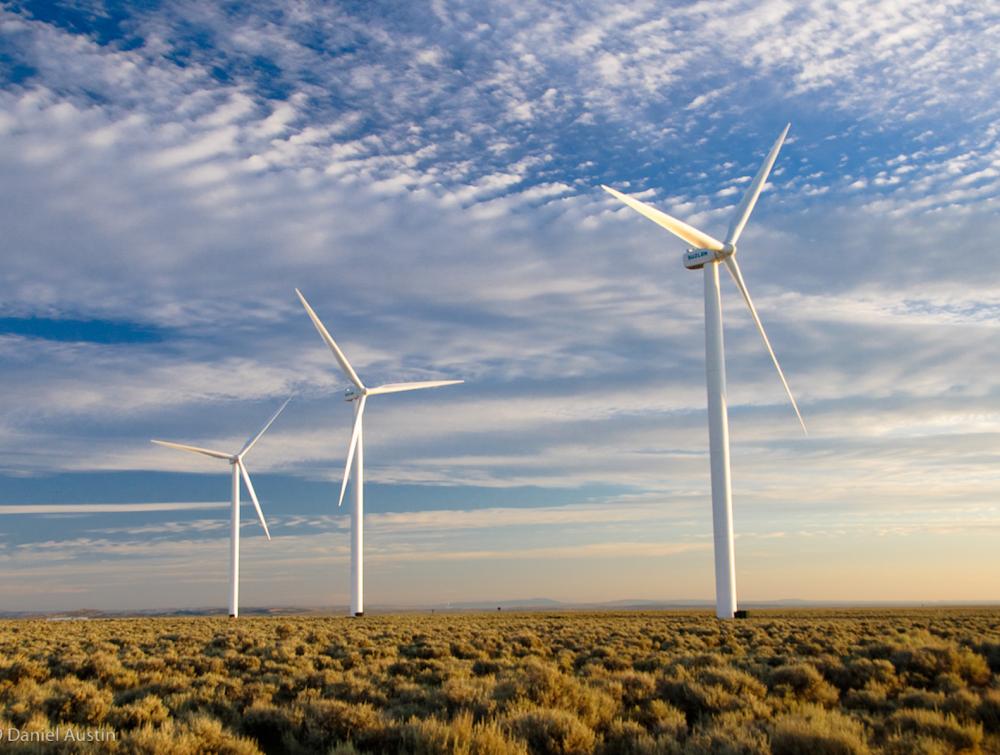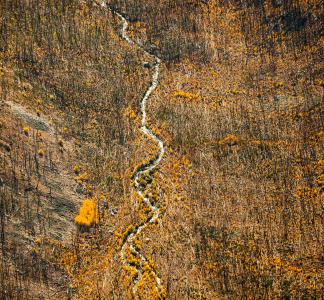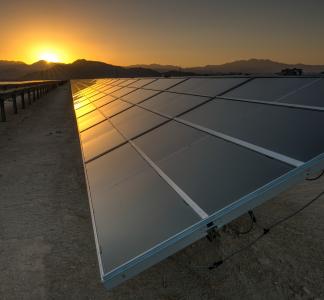Why we vitally need public lands and waters for responsible renewable energy

Three wind turbines against a blue sky with sparse clouds
Daniel Hoherd, flickr
US is major contributor to climate crisis, systemic injustices—obligation to change course
The U.S has been a longtime contributor to the global climate crisis. It’s one of three colonizing places, alongside Europe and China, that together produce more than half of the world’s heat-trapping gases, and the number one all-time contributor to climate change.
It’s important that we acknowledge this history and the connection between colonialism and climate injustices, including the U.S. ignoring the Traditional Knowledge of Indigenous peoples and contributing to extractive energy practices that disproportionately harm Native, Black and Brown people and the land. Beyond that, we must ensure the U.S., one of the greatest contributors to the climate crisis, is also one of the greatest contributors to its actual solutions. This is where public lands and waters come into play.
Public lands and waters can buffer communities against most severe effects of climate crisis
Some of the world’s largest and most vital ecosystems that naturally absorb climate-changing emissions and provide natural infrastructure are on public lands and waters. Healthy public lands and waters can support ample responsible production of renewable energy that can help boost local economies, and in some cases even help rebuild communities dependent on fossil fuels. Public lands and waters can also improve communities’ resilience to climate impacts like extreme heat or storms.
Responsibly managing public lands and waters can even buffer communities against the most severe effects of climate change.
Yet despite these opportunities, the U.S. federal government continues to sell off our public lands to oil and gas companies. The result of that is even more greenhouse gas emissions that are driving the climate crisis in the first place, and prolonged dependence on a harmful toxic energy economy when we should be transitioning to renewable energy.
Only a fraction of public lands currently managed for conservation, renewable energy
Serious investments in energy conservation, efficiency and renewable energy generation that happens close to where the energy will be consumed—like rooftop solar panels—are critical. But they aren’t enough to combat this global crisis and meet the U.S.’ current and projected energy needs. That’s where the massive renewable energy potential of public lands and waters comes into play.
Currently, only a fraction of the U.S.’ 640 million acres of federally managed public lands are managed for community and climate benefits. That means we have great opportunity ahead of us to rethink public lands. If we take a “smart from the start” approach, we can meet the country’s energy goals and responsibilities while also preserving the 30 percent of lands and waters scientists say is needed to help nature adapt and endure climate change.
The "smart from the start" approach means making sure renewable energy projects avoid places of cultural, historical and spiritual significance or wildlife habitat and wildlands. Through meaningful collaboration between Tribes and local communities, we can ensure projects only move forward after a holistic consideration of all the most important values in the development area. We must also keep in mind that the economic benefits of renewable energy development should be equitably shared and prioritized for communities that have survived the worst impacts of the extractive economy. This approach will help combat climate change, protect Indigenous lands and cultural resources and conserve wildlife habitat.
Big opportunity as Biden administration set to update decade-old solar guidance
In April of 2021 Congress passed legislation setting a target of permitting 25 gigawatts of renewable energy on public lands by 2025. This is a threefold increase in approved projects and enough to power over 10 million homes.
The Bureau of Land Management is also looking to update and expand its decade-old Western Solar Plan to support and improve renewable energy development on public lands across the West. Their focus should be applying a comprehensive, landscape-level, smart-from-the-start approach to renewable energy across all Western states; meaningfully involving frontline communities and tribes at every point in the planning process; strengthening incentives for solar development on former minelands and brownfields; and taking a holistic approach to identifying and updating the criteria BLM uses to exclude solar development in certain critical landscapes.
Making these changes can help meet our energy needs while better protecting communities, tribes and the many values of our shared lands. The public can weigh in on this important process to reiterate the importance of these public land solar energy goals.
Variety of approaches needed to combat climate crisis, including holistic use of public lands and waters is vital
We need a variety of methods to combat the climate crisis. Equitable, holistic and responsible development of renewable energy on public land is a vital part of this fight. We must also remember that doing so requires acknowledging and remedying the ways we think about and approach climate-forward solutions, including on public lands and waters.



